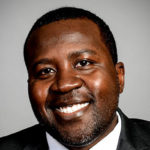This post summarizes recent activity at the Supreme Court in cases decided by the Federal Circuit.
- One new petition for writ of certiorari was filed with the Supreme Court in Micron Technology, Inc. v. North Star Innovations, Inc. raising questions related to the Appointments Clause.
- One brief in opposition to the petition in Hologic, Inc. v. Minerva Surgical, Inc. was filed with the Court by Minerva.
- Two reply briefs were filed with the Court, the first by Minerva in Minerva Surgical, Inc. v. Hologic, Inc., and the second by Cochlear in Cochlear Corp. v. Alfred E. Mann Foundation for Scientific Research.
- Finally, the Supreme Court denied the petitions for writ of certiorari in two cases: (1) Consumer 2.0, Inc. v. Tenant Turner, Inc. and (2) Wilkins v. United States District Court for the Eastern District of California.
Here are the details.
Granted Cases
There is no new activity to report.
Petition Cases
New Petitions
The Supreme Court received one new petition for writ of certiorari in Micron Technology, Inc. v. North Star Innovations, Inc. In its petition, Micron asked the Court to review the following two questions:
- “Whether, for purposes of the Appointments Clause, U.S. Const. art. II, § 2, cl. 2, administrative patent judges of the U.S. Patent and Trademark Office are principal officers who must be appointed by the President with the Senate’s advice and consent, or ‘inferior Officers’ whose appointment Congress has permissibly appointed in a department head.”
- “Whether the court of appeals erred by allowing a patent owner that did not present an Appointments Clause challenge to the agency, and that acquiesced in the appointment of the same administrative patent judges in a related matter, to nonetheless present such challenges on appeal.”
New Responses
One new brief in opposition to the petition in Hologic, Inc. v. Minerva Surgical, Inc. was filed with the Court by Minerva. In its response, Minerva contends that
The Federal Circuit’s assignor estoppel doctrine is illogical and internally inconsistent. The Federal Circuit has adhered to the text of patent statutes in deciding that assignor estoppel has no place in inter partes reviews. . . . At the same time, outside the inter partes review context it has expanded assignor estoppel at every opportunity, including in this case. This Court’s intervention is necessary to bring order to the Federal Circuit’s jurisprudence. As Minerva has explained in its petition [] and reply in support of that petition, Minerva’s petition presents an ideal vehicle for the Court to consider whether assignor estoppel has any continued validity and, if so, to clarify the doctrine’s proper boundaries. This Court should grant that petition. In contrast, Hologic’s cross-petition does not allow the Court to consider assignor estoppel at all. . . . Instead, Hologic’s cross-petition would allow this Court to review only an issue that is not the subject of controversy. There is no authority for allowing a party to obtain a judgment of ‘patent’ infringement against anyone after the ‘patent’ has conclusively been determined to be invalid. Hologic’s cross-petition presents only its self serving attack on settled rules regarding the enforcement of final judgments, not about assignor estoppel. This Court should, therefore, deny Hologic’s cross-petition.
New Replies
Two new reply briefs were submitted to the Supreme Court.
In Minerva Surgical, Inc. v. Hologic, Inc., Minerva filed its reply, arguing that
The parties agree that the law of assignor estoppel, as developed by the Federal Circuit, has produced inconsistencies that require this Court’s review. The Federal Circuit has concluded that assignor estoppel has no place in patent office proceedings, based on the same bedrock principles the Federal Circuit has ignored in continuing to apply assignor estoppel in cases which—like this one—arise in district court. As Hologic agrees, ‘[t]hat makes no sense, and this Court should resolve the conflict.’ The parties dispute only whether this Court should accept review of Minerva’s petition or Hologic’s crosspetition to consider the issue. None of the supposed vehicle problems that Hologic asserts should deter this Court from granting Minerva’s petition survive inspection. . . . Only Minerva’s petition presents any opportunity for this Court to consider what both parties agree is an important and controversial issue meriting this Court’s review: whether, and if so in what form, assignor estoppel should bar consideration of a patent’s validity.
In Cochlear Corp. v. Alfred E. Mann Foundation for Scientific Research, Cochlear filed its reply, contending that
Respondents’ brief in opposition nowhere denies that the petition raises issues of great importance to patent law. Nor could it, given that use of a later arising stock valuation added an eye-popping $80 million to the verdict below, and the ultimate $280 million judgment was allowed to stand even though two of the four patent claims on which the verdict rested were later invalidated. Similar distortions of damages awards recur often in patent litigation. Patent holders often use later valuation increases to inflate hypothetical royalty amounts under the Federal Circuit’s ‘Book of Wisdom.’ And patent holders often assert multiple patent claims tried to general verdicts only to see some claims invalidated post-verdict. The rules of law applied below thus have multi-million-dollar practical consequences that warrant the Court’s attention. Respondents also have no answer to the conflicts set forth in the petition. . . . Instead, the brief in opposition presents a barrage of factual details designed to divert attention from the questions presented and to paint this case as a poor vehicle for addressing them. That effort fails.
Denied Petitions
The Supreme Court denied the petitions for writ of certiorari in two cases: (1) Consumer 2.0, Inc. v. Tenant Turner, Inc. and (2) Wilkins v. United States District Court for the Eastern District of California.

